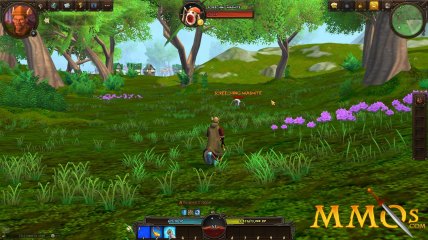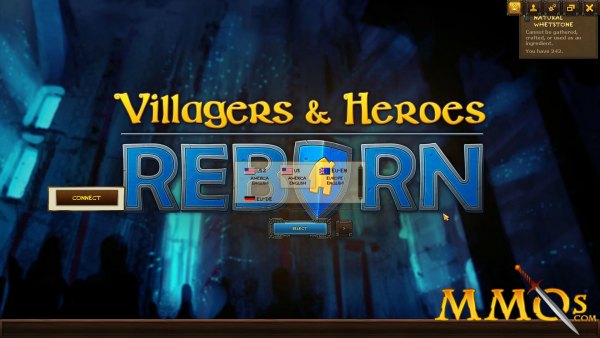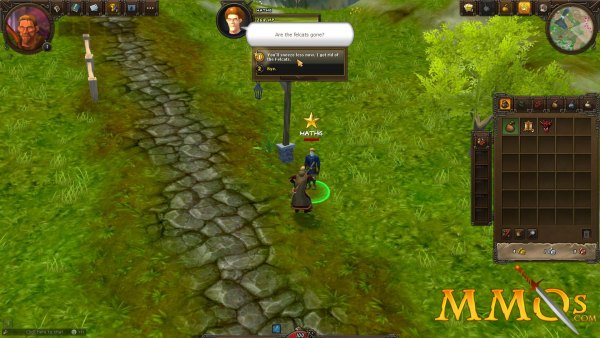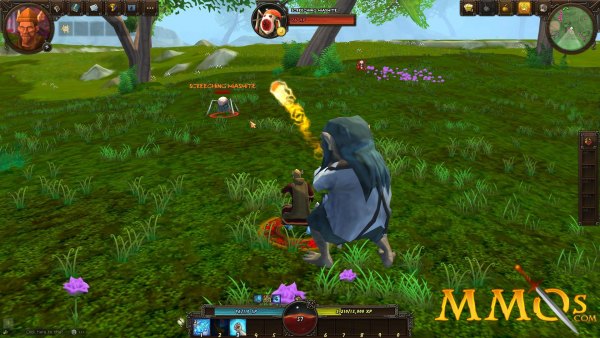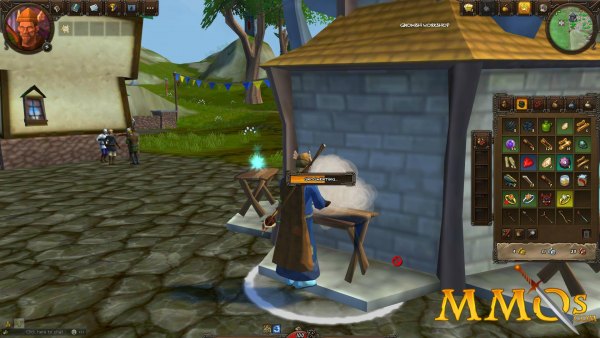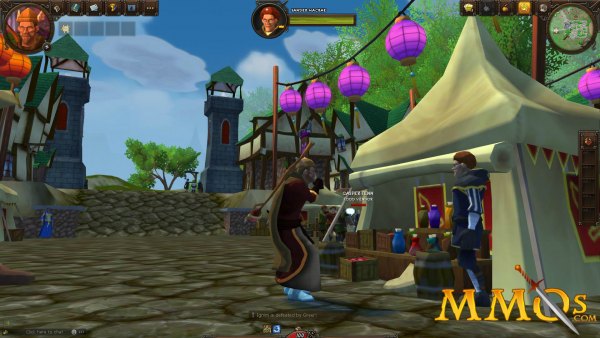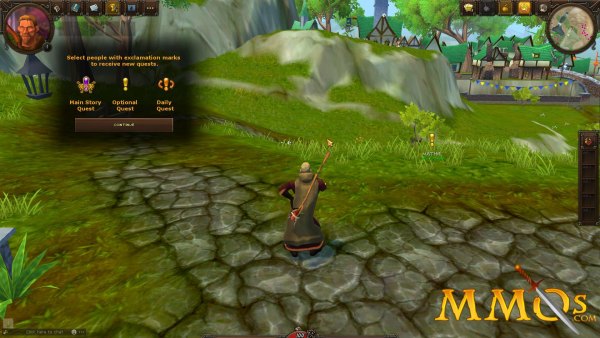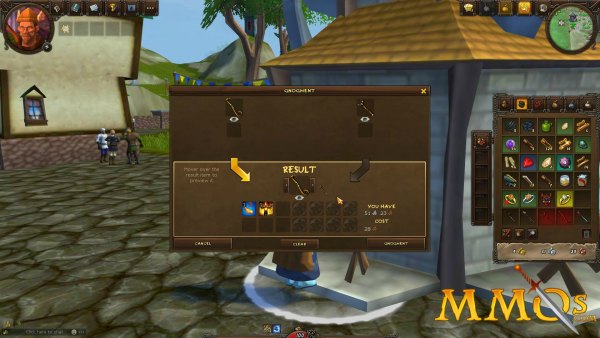Villagers and Heroes
Villagers and Heroes, previously known as A Mystical Land, is a fantasy sandbox MMORPG with an incredible amount of customization and player freedom. It’s a lighthearted game that doesn’t take itself too seriously, but still has a lot to offer, including a robust crafting system and player housing.
| Publisher: Mad Otter Games Playerbase: Low Type: F2P MMORPG Release Date: April 17, 2014 PvP: None Pros: +Great voice acting. +Player controlled village system. +Good crafting system. Cons: -Controls can feel clunky. -Few classes available. -No PvP. |
Villagers & Heroes Overview
In Villagers and Heroes, players build community villages and master different gathering and crafting abilities. The game has little emphasis on combat and no PvP, so players looking for exciting fights are out of luck. However, those looking to build towns and be social with other players have found a game worth checking out. Villagers and Heroes bills itself as an open ended sandbox game, and thus has a much greater emphasis on crafting rather than fighting.
Villagers & Heroes Key Features -
- Play who you want - Customize your character’s backstory, appearance, personality, and more. 8 Primary Combat Class builds available.
- Become a master of crafts - Master one gathering or crafting skill, or master them all (Mining, Fishing, Bug lore, Plant lore, Blacksmithy, Cooking, Tailoring, Woodcrafting, Gardening and Ranching).
- Create your own village - Create player villages, and become the mayor!
- Become a hero reborn - Reset your hero to level one, and gain boosts in experience and talents.
Villagers & Heroes Screenshots
Villagers & Heroes Featured Video
Villagers & Heroes Review
By, Dimitri Jordan
Villagers and Heroes, initially called A Mystical Land, is a Fantasy MMORPG developed and published by Mad Otter Games that emerged in 2011 as a browser-based game with an emphasis on crafting and community-building instead of combat and PvP. On April 17th, 2014, the game was re-released as Villagers and Heroes, and the stamina-based crafting significantly hindered that major aspect of the game. On June 8th, 2015, the game was relaunched with better visuals, new quests and voice-acting, and a complete overhaul of the crafting system.
Starting Up
When starting the game, players have a large variety of options when it comes to character customization. Players will choose their gender, height, skin tone, personality, origin, head and face shape, eye color, hair style, and hair color before choosing class and skill options. This allows players a surprising amount of customization, and is a welcome reprieve from games that hardly allow for customization at all.
Players are then taken to Ethos Island, a new tutorial area that walks players through the basics of the game while completing an involved quest line to solve disappearances and a mysterious entity called the Malicious Miscreant. The game is not as serious as most MMORPGs, and the lighthearted atmosphere makes the game accessible to different players.
The controls are identical to most other MMORPGs. Players move by using the WASD keys, and use skills by using 1-0. Keys like K and I are used to open the skills and inventory windows, respectively, and players who are accustomed to MMOs will easily be able to quickly navigate through windows.
The First Few Levels
Leveling in Villagers and Heroes is on the slower side, but that’s okay. Many of the game's features are level-locked, which prevents the game from feeling overwhelming from the start. Villagers and Heroes presents a space to slowly grow, both in player level and skills. While player levels are gained slowly, crafting and gathering skill levels can be achieved faster, and unlocking new ingredients and recipes quickly becomes as exciting as getting new gear or skills.
When players gain a level, they also receive a talent point. Talent points are used to unlock passive and active skills, and some skills require multiple talent points to reach the highest levels. These improved skills also require players to reach higher levels, meaning a player may get Fireball at level 1, but not be able to upgrade it until level 5.
The Gameplay
The simple gameplay of Villagers and Heroes is its biggest advantage. Crafting is as simple as a few clicks, and combat is not as difficult as other titles. While most games attempt to have the most hardcore gameplay or complex PvP mechanics, Villagers and Heroes presents a relaxing game that can be played at a slow pace, where players can choose to play it every day or every few months and have plenty of fun either way.
Features
The focus for Villagers and Heroes is easily the crafting and community aspects.
Many MMORPGs involve crafting, but force players to specialize in their gathering and crafting skills. Villagers and Heroes allows players to master all ten of the gathering and crafting skills, letting players play the way they want at all times. The gathering skills are Bug Lore, Fishing, Mining, and Plant Lore. These skills often let players collect items that are useful on their own, like food, but these skills mostly provide materials for the crafting skills. The crafting skills are Tailoring, Cooking, Woodcrafting, and Smithing. These skills allow players to create powerful healing foods, create weapons and armor, and items that grant bonuses. Like gathering skills, players can master any and all crafting skills.
Villagers and Heroes also has two skills that relate to player’s homes: Gardening and Ranching. Gardening allows players to grow crops, which they can then use for cooking, feeding animals, trading for magic seeds, or selling. Ranching allows players to have a variety of sheep, chickens, and pigs that produce various items. Chickens and Pigs produce foods that can be used in strong cooking recipes, while sheep provide different fleeces. Some fleece, like from Ember Sheep, are used in crafting special class-specific equipment (Fire Wizards), while the Gold Sheep helps players to generate gold.
When it comes to communities in Villagers and Heroes, the main features are the houses and villages.
Houses allow players to have a private place to relax, as well as a locker to store items. Houses are available in a variety of styles, so players can choose one that most matches their style. Different style houses grant players different bonuses, such as +10% movement speed or reduced spell cost.
Player houses come together to form villages, communities with groups of players. There are two types of villages, one comprised of guild members and one comprised of random players. Each village has a mayor that can change the name and welcome text of the village, as well as assign ranks to the villagers. As villages grow, they collect benefits, similar to house benefits. In addition, villages can come together to build community assets, like crafting stations, or even areas that grant access to new quests. Villages truly feel alive with an active community, as players can see the village grow and contribute in a meaningful way.
A third major feature is the Rebirth system. By using the Rebirth system, players can revert back to level 1 and replay the story and events they’ve completed while keeping their inventory, house, and affiliations. Players can rebirth once after level 30, 45, 60, and 75. By rebirthing, players gain 5 extra talent points, and have increased experienced gain until they reach their next newest level. For example, after the level 30 rebirth, players would have increased experience gain until level 31. In addition to talent points and experience, players receive a special emblem that shows others how many times a player has been reborn.
Cash Shop
The Cash Shop in Villagers and Heroes has tons of items for players looking to spend a few bucks, ranging from the usual crafting perks and costume pieces to items that explore the game’s emphasis on crafting and housing like farm animals and housing items. Because of the lack of PvP and no particularly emphasis on combat, no items grant players an unfair, “pay-to-win” advantage.
Final Verdict - Fair
Villagers and Heroes is a strange game to play. While most MMORPGs focus on combat and end-game PvP, Villagers and Heroes almost ignores both entirely, and instead focuses on crafting and player housing. This isn't necessarily bad, but those looking for a sandbox experience already have a lot of options including the wildly complicated Wurm Online or one of the many survival games, like Tree of Life. Those looking for a sandbox game may find something to like in Villagers and Heroes, but it wasn't my cup of tea.
Villagers & Heroes Videos
Villagers & Heroes Links
Villagers & Heroes Official Site
Villagers & Heroes Steam
Villagers & Heroes Game Guide (Database / Guides)
Villagers & Heroes Wiki (Database / Guides)
Villagers & Heroes System Requirements
Minimum Requirements:
Operating System: Windows XP / 7 / 8 / 10
CPU: Pentium D / Athlon 64 X2
Video Card: On board graphics
RAM: 2 GB
Hard Disk Space: 3 GB
Recommended Requirements:
Operating System: Windows XP / 7 / 8 / 10
CPU: Core 2 duo 2.2 GHz / Athlon 64 X2 2.66 Ghz or better
Video Card: Any GPU with 512 MB or more VRAM
RAM: 4 GB
Hard Disk Space: 3 GB
Villagers & Heroes Music & Soundtrack
Coming Soon!
Villagers & Heroes Additional Information
Developer: Mad Otter Games
Game Engine: Torque 3D Engine
Release Date: October 3, 2011
Release Date (Steam): April 17, 2014
Development History / Background:
Villagers & Heroes was developed by the American indie game developer Mad Otter Games, based out of Oregon using the Torque 3D engine. The game originally launched as "A Mystical Land" back in 2011, but relaunched with an entirely new engine later in 2014. The game was originally published by Neonga, but is now self-published and available on Steam.
